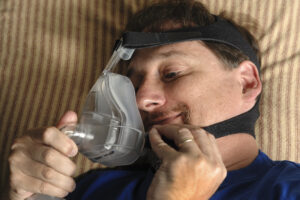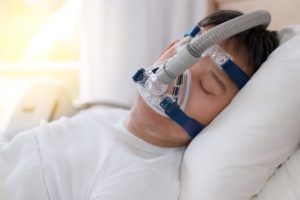Health and Safety Concerns Cited as Top Priority in New Daylight Saving Time Survey

New survey data shows health and safety emerging as the public’s top priority for legislative changes related to daylight saving time (DST).
The 2023 Sleep Prioritization Survey by the American Academy of Sleep Medicine (AASM) found that 27% of people said health and safety was the most important consideration for policy about daylight saving time.
Health and safety ranked as the top priority across all age groups and geographic regions. 21% said public opinion was their top consideration, and 19% rated energy consumption the highest. Only 11% said business concerns were the most important factor for driving public policy.
Similar to previous polls, the survey of over 2,000 people across the country found strong evidence of the public’s desire to eliminate twice-annual clock changes. 64% of people said they wanted to keep clocks the same throughout the year, and only 10% wanted to keep springing forward and falling back.
However, debate continues about whether it would be better to adopt permanent standard time or permanent daylight saving time.
In the survey, 64% of parents expressed concerns about the safety of children going to school in the dark, which would be more common with the later sunrises under permanent DST.

“Most parents are understandably uncomfortable with their children either walking to school or waiting for the bus in the dark,” says Dr. James Rowely, president of AASM. “Switching to permanent standard time would eliminate those problems by providing sunlight earlier in the morning, making it safer for children to go to school. Standard time also makes it easier for children to wake up in the morning and fall asleep each night.”
In terms of public health, several medical organizations have argued in favor of abolishing daylight saving time and using year-round standard time. AASM recently published a new position paper reaffirming its support for permanent standard time. Permanent DST would reduce morning light, and a lack of morning light exposure can disrupt the body’s circadian rhythms and have harmful effects on sleep, the cardiovascular system, and mental health.
“Standard time…makes it easier for children to wake up in the morning and fall asleep each night.”
Dr. James Rowley, president, American Academy of Sleep Medicine
On the flip side, advocates of permanent DST point to potential benefits for public safety. Although not conclusive, evidence suggests that there would be fewer traffic accidents with permanent DST. Some studies have also found that increased afternoon and evening light under permanent DST could contribute to reduced crime rates.
Even though a majority of people want an end to clock changes, legislation is at a standstill, and for now there is no clear momentum for adopting either permanent standard time or permanent DST. But the debate is sure to resurface, and when it does, this recent survey indicates that elected officials should focus their attention on matters of public health and safety.
Got a hot tip? Pitch us your story idea, share your expertise with SleepFoundation.org, or let us know about your sleep experiences right here.
References
6 Sources
-
American Academy of Sleep Medicine. (2023). AASM sleep prioritization survey DST – legislation.
https://aasm.org/wp-content/uploads/2023/10/sleep-prioritization-survey-2023-dst-legislation.pdf -
American Academy of Sleep Medicine. (2023). AASM sleep prioritization survey: Eliminating seasonal time changes.
https://aasm.org/wp-content/uploads/2023/10/sleep-prioritization-survey-2023-eliminating-seasonal-time-changes.pdf -
American Academy of Sleep Medicine. (2023). AASM sleep prioritization survey DST – dark mornings.
https://aasm.org/wp-content/uploads/2023/10/sleep-prioritization-survey-2023-dst-dark-mornings.pdf -
American Academy of Sleep Medicine (October 17th, 2023) “Fall back” for the last time? Six in 10 Americans support the elimination of seasonal time changes., Retrieved November 2, 2023 from
https://aasm.org/fall-back-for-the-last-time-six-in-10-americans-support-the-elimination-of-seasonal-time-changes/ -
Rishi, M. A., Cheng, J. Y., Strang, A. R., Sexton-Radek, K., Ganguly, G., Licis, A., Berneking, M. W., Bhui, R., Creamer, J., Kundel, V., Spector, A. R., Olaoye, O., Hashmi, S. D., Abbasi-Feinberg, F., Abreu, A. R., Gurubhagavatula, I., Kapur, V. K., Kuhlmann, D., Martin, J., Olson, E., … Sullivan, S. (2023). Permanent standard time is the optimal choice for health and safety: an American Academy of Sleep Medicine position statement. Journal of clinical sleep medicine : JCSM : official publication of the American Academy of Sleep Medicine, 10.5664/jcsm.10898. Advance online publication.
https://jcsm.aasm.org/doi/10.5664/jcsm.10898 -
Carey, R. N., & Sarma, K. M. (2017). Impact of daylight saving time on road traffic collision risk: a systematic review. BMJ open, 7(6), e014319.
https://bmjopen.bmj.com/content/7/6/e014319












































































